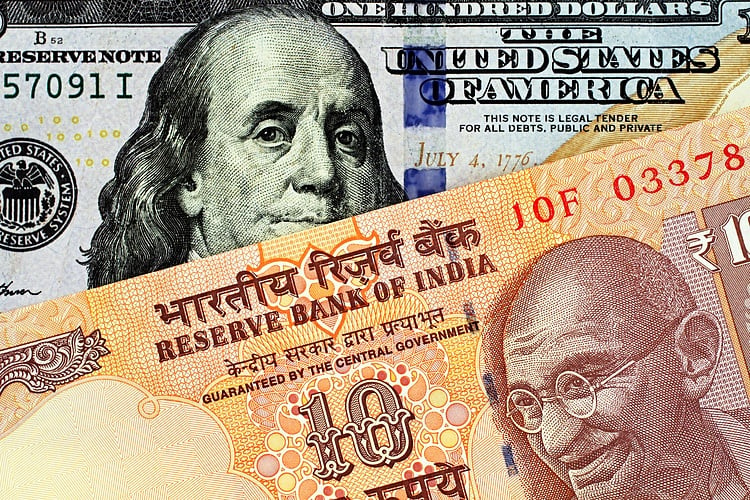The Indian Rupee has edged lower against the firmer US Dollar, with the Reserve Bank of India expected to maintain its policy stance in its December meeting. US weekly Initial Jobless Claims are also due later on Thursday. The markets anticipate that the US interest rate may have peaked and the Federal Reserve (Fed) will ease policy rates next year. The possibility of a Fed rate cut in the middle of 2024 could drag the US Treasury bond yields lower, benefiting the INR. The Indian Rupee remains vulnerable to higher crude prices as India is the world’s third-biggest oil consumer.
India’s trade deficit narrowed to $31.46B in October from $19.37B in September, with exports growing by 6.2% to $33.57B in October from $34.47B in September while imports stood at $65.03B from $53.84B in the previous month. The rise in global crude oil prices increased the country’s import cost.
The Indian Rupee has maintained a bearish bias, with the USD/INR pair trading within the wider range of 82.80-83.35 since September. The pair holds a bullish outlook as it remains above the key 100-day Exponential Moving Average (EMA). The immediate resistance level for the pair is seen near the upper boundary of the trading range at 83.35.
The table below shows the percentage change of the US Dollar (USD) against listed major currencies in the last 7 days. The US Dollar was the weakest against the Swiss Franc.
The Indian economy has averaged a growth rate of 6.13% between 2006 and 2023, attracting a lot of foreign investment. Fluctuations in Dollar-demand from Indian importers, the price of Oil, inflation, trade deficit, and increased volatility in markets all impact the value of the Rupee.
